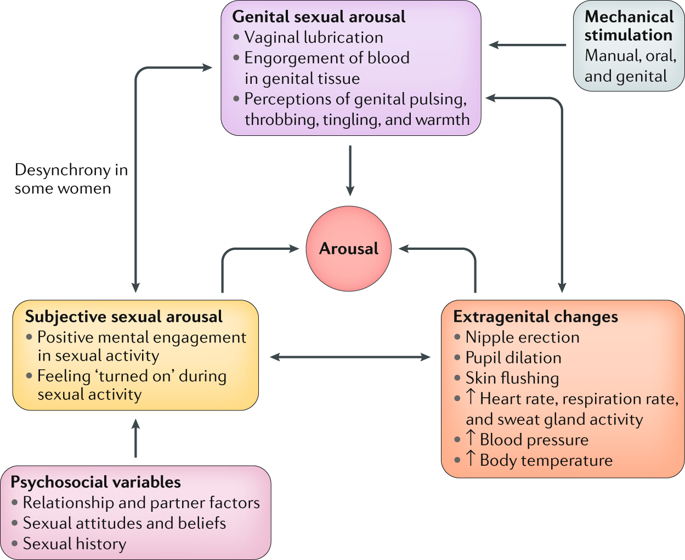Nature Reviews Urology ( IF 12.1 ) Pub Date : 2019-01-21 , DOI: 10.1038/s41585-018-0142-6 Cindy M. Meston , Amelia M. Stanton

|
Sexual arousal in women comprises two components: genital arousal and subjective arousal. Genital arousal is characterized by genital vasocongestion and other physiological changes that occur in response to sexual stimuli, whereas subjective arousal refers to mental engagement during sexual activity. For some women, genital arousal enhances subjective arousal; for others, the two types of arousal are desynchronous. However, the relationship between genital and subjective arousal might not be relevant to the diagnosis and treatment of sexual arousal dysfunction. Studies have shown that not all women who report sexual arousal problems have decreased genital arousal, and only some women with decreased genital arousal have low subjective arousal. To develop efficacious treatments for female sexual arousal dysfunction, researchers need to differentiate the women for whom genital sensations have a critical role in their subjective arousal from those who are not mentally aroused by genital cues. The mechanisms by which women become aroused and the inputs into arousal have considerable implications for treatment outcomes.
中文翻译:

了解女性的性唤起和主观-生殖器失调
女性的性唤起包括两个部分:生殖器唤起和主观唤起。生殖器唤醒的特征是响应性刺激而发生的生殖器血管收缩和其他生理变化,而主观唤醒是指性活动期间的精神参与。对于某些女性而言,生殖器唤醒会增强主观唤醒。对于其他人,这两种唤醒方式是不同步的。但是,生殖器和主观唤醒之间的关系可能与性唤醒功能障碍的诊断和治疗无关。研究表明,并非所有报告性唤起问题的女性生殖器唤醒都减少,只有部分生殖器唤醒减少的女性主观唤醒较低。为了开发有效的治疗女性性唤起功能障碍的方法,研究人员需要将那些在自己的主观性唤起中具有关键作用的女性与那些没有在精神上引起性暗示的女性区分开来。妇女被唤醒的机制以及对唤醒的投入对治疗效果具有重要影响。











































 京公网安备 11010802027423号
京公网安备 11010802027423号